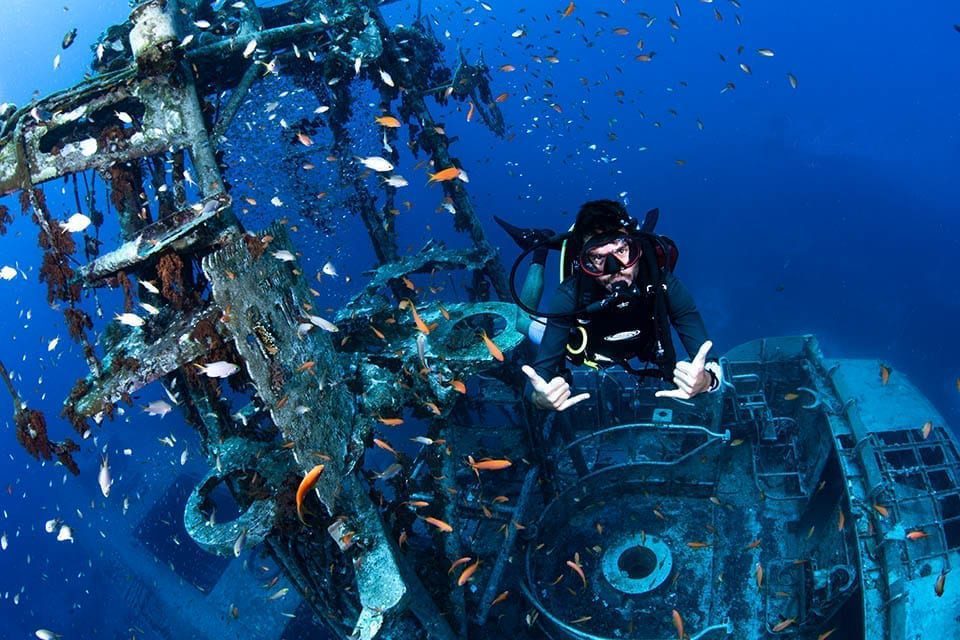Deep sea diving is an awe-inspiring activity that allows individuals to delve into the mysterious depths of our oceans, uncovering the mesmerizing wonders hidden beneath the waves. As experienced divers, we understand the allure of exploring the unknown, the thrill of encountering unique marine life, and the sheer beauty that lies beneath the surface. In this comprehensive guide, we aim to provide an insightful overview of deep sea diving, encompassing its techniques, equipment, safety measures, and the unparalleled experiences it offers.
Understanding Deep Sea Diving
Diving into the Abyss
Deep sea diving, often referred to as deep-sea exploration or deep diving, involves submerging to considerable depths in the ocean, typically beyond recreational scuba diving limits. These depths often exceed 60 feet (18 meters) and extend to the deepest recesses of our oceans, reaching depths of thousands of feet.
The Thrill of Exploration
One of the primary reasons why deep sea diving captivates enthusiasts is the opportunity to explore uncharted territories and encounter marine life rarely seen in shallower waters. From vibrant coral reefs teeming with colorful fish to encountering majestic creatures like whales, dolphins, and elusive deep-sea species, the experience is both captivating and enthralling.
Essential Equipment and Techniques
Gear for the Depths
Successful deep sea diving necessitates specialized equipment tailored to withstand the pressures and challenges of deep waters. Diving suits designed to endure extreme conditions, advanced breathing apparatus such as rebreathers, and powerful underwater lights are indispensable tools for navigating these depths.
Mastering the Art
Training and expertise play a pivotal role in deep sea diving. Proper certification and training from reputable diving schools ensure divers are well-equipped to handle the challenges posed by the deep ocean environment. Understanding decompression techniques, managing buoyancy, and recognizing potential hazards are vital skills for a safe and fulfilling dive.
Safety Measures and Precautions
Prioritizing Safety
Safety is paramount in deep sea diving. Rigorous safety protocols, thorough equipment checks, and adherence to dive plans are critical steps to minimize risks. Regular maintenance of diving equipment, thorough pre-dive inspections, and maintaining communication with fellow divers and support teams are imperative safety measures.
Mitigating Risks
Awareness of potential risks, such as decompression sickness, nitrogen narcosis, and equipment malfunctions, is crucial. Divers must stay vigilant, practice prudent decision-making, and be prepared to handle unforeseen circumstances while in the depths.
Unparalleled Experiences and Conservation Efforts
Preserving Marine Ecosystems
Deep sea diving not only offers unparalleled experiences but also highlights the significance of marine conservation efforts. Witnessing the fragile beauty of underwater ecosystems underscores the importance of preserving these environments. Responsible diving practices, support for marine conservation initiatives, and raising awareness about environmental sustainability are vital to protect these delicate ecosystems.
The Allure of Discovery
The allure of deep sea diving lies in the sense of adventure and the thrill of discovery. Each dive presents a unique opportunity to witness breathtaking marine landscapes, encounter rare and fascinating creatures, and contribute to the understanding and conservation of our oceans’ biodiversity.
Conclusion
In conclusion, deep sea diving is a captivating endeavor that beckons adventurers to explore the mysteries hidden beneath the ocean’s surface. With proper training, equipment, safety measures, and a profound respect for marine life, divers can embark on unforgettable journeys into the depths, fostering a deep appreciation for our planet’s wondrous aquatic realms.


